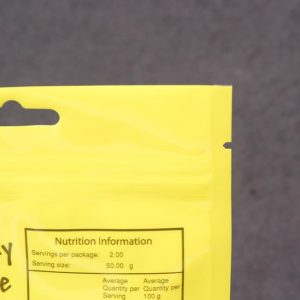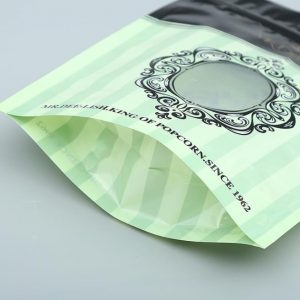Plastic pouch packaging can be an effective way to maximize the shelf life of various products, especially those that are sensitive to external factors like moisture, air, and light. Here are some strategies to achieve longer shelf life with plastic pouch packaging:
- Barrier Properties: Choose plastic materials with excellent barrier properties that prevent the ingress of oxygen, moisture, and other gases. Common barrier plastics include aluminum foil laminates and high-barrier films like EVOH (ethylene-vinyl alcohol copolymer).
- Vacuum and Gas Flushing: Utilize vacuum-sealing or gas-flushing techniques to remove air or replace it with inert gases, such as nitrogen, to create an oxygen-free environment inside the pouch. This reduces the oxidation of products and extends shelf life.
- UV Protection: For products sensitive to light exposure, opt for plastic pouch materials with UV-blocking properties to prevent degradation caused by UV rays.
- Airtight Sealing: Ensure that the pouch is sealed airtight to prevent the entry of air and moisture. Proper sealing prevents spoilage and maintains product freshness.
- Moisture Control: For products that are prone to moisture absorption, use moisture-resistant pouch materials or incorporate desiccants or moisture absorbers within the pouch to maintain product quality.
- Temperature Considerations: Some products may require special temperature considerations. For example, retort pouches are designed to withstand high-temperature processing, making them suitable for products requiring sterilization.
- Portion Control: Use smaller pouch sizes for single servings or small quantities to reduce the exposure of the product to air and moisture during use.
- Resealable Features: Consider incorporating resealable features, like zipper closures or spouts, which allow consumers to seal the pouch after use, preserving product freshness.
- Product Testing: Conduct product testing to determine the optimal packaging material, sealing, and storage conditions to extend shelf life effectively.
- Quality Control: Implement strict quality control measures during the manufacturing process to ensure that each pouch meets the required standards for barrier properties and airtight sealing.
- Storage Conditions: Provide guidelines to consumers regarding the recommended storage conditions, such as storing the pouch in a cool, dry place, away from direct sunlight.
It is important to note that while plastic pouch packaging can extend shelf life, it is not a solution for all products. Some items may require alternative packaging methods, such as vacuum-sealed containers or rigid packaging, depending on their specific characteristics and shelf life requirements.
Additionally, while plastic pouches can help preserve products, it’s essential to balance shelf life extension with environmental considerations. Efforts to reduce packaging waste, use more sustainable materials, and optimize packaging designs can help strike a balance between product preservation and environmental impact.













